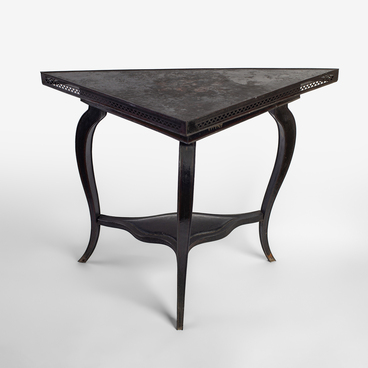“Sheet Rolling Shop” was painted by Pavel Fyodorovich Khudoyarov, a representative of the famous artistic dynasty from Nizhny Tagil. He had no special education, which did not prevent him from becoming a realist painter.
Pavel Khudoyarov’s work introduces the sheet-rolling shop of the Nizhny Tagil iron-smelting and iron-making plant. It is an elongated structure with high ceilings. Wide openings in the roof obviously serve for natural light and ventilation. The shop is illuminated mainly by the light of red-hot metal and the fire of blazing hearths.
Along the left wall of the shop, there are two heating furnaces, each with three hearths. High chimneys go to the roof. Billets for further rolling of iron sheets are heated in the furnaces. All the craftsmen, whom the artist depicted in the picture, are busy with their work: one is heating a billet, others are loading the sheets on a cart, and several people are servicing the sheet rolling machine. The worker on the right has sat down to have a meal.
On the right side of the shop, there is a piece of equipment rather advanced for its time — a machine for rolling metal. In the middle section of the left wall is an exit to the outside, although it is not visible. A horse-drawn cart is heading that way. On the right, in the back of the shop, an iron equal-arm balance with trays for weighing metal is mounted on the wall.
The central, most significant figure in the image is a gentleman in an open overcoat. He is a man about 30–40 years old, short, stocky, thickset, with a clean-shaven face. As it is winter, the man is dressed in warm clothes, but due to the heat of the smelting furnaces and red-hot metal, he had to open his fur coat. The man looks down, as if listening to the noise of the working sheet-rolling machine.
The time of painting corresponds to the period of activity of an engineer, manager of the technical part of the factories of the Nizhny Tagil district Fotiy Ilyich Shvetsov (1805–1855). There is an assumption that he was the customer and the owner of the painting. Therefore, it can be assumed that at the sheet-rolling machine, there is Fotiy Shvetsov himself. The Soviet historian Viktor Semyonovich Virginsky noted,

